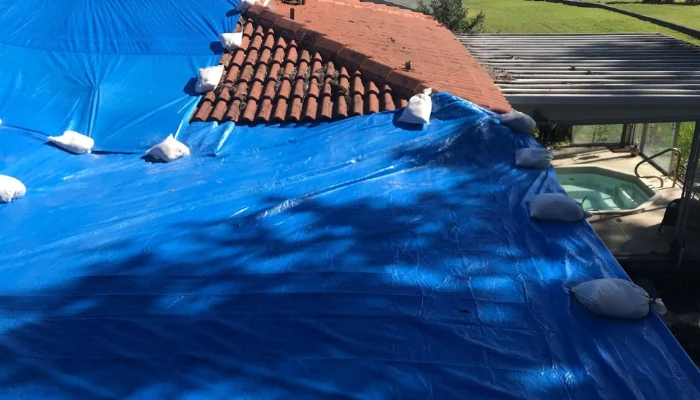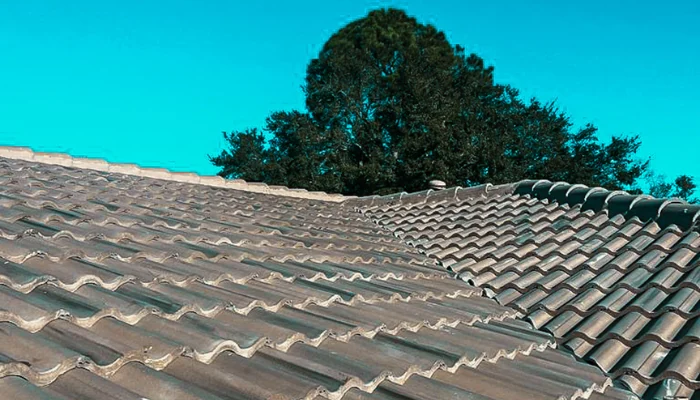The sentence “benefits of a blue roof” might sound new, but it’s catching the attention of homeowners and businesses across Florida.
A blue roof isn’t just about looks. It’s a clever way to manage rainwater, reduce flood risk and even save some cash in the long run. Wondering how this works and why people are making the switch? Let’s get straight to it.
Experts at Protect Preserve Roofing see blue roofs as more than a quick fix. They’re a proven tool to protect buildings from heavy storms and heat, especially in our state where sudden downpours are the norm.
And more, according to the Environmental Protection Agency (EPA), effective rainwater management can cut runoff by up to 40%, what it shows a real relief during those afternoon showers.
However is a blue roof right for your home or business? That’s the question we’ll tackle today. Come with us and see why blue roofs are becoming the go-to solution for water management and long-term peace of mind.
What Is a Blue Roof and How Does It Work?
A blue roof is a smart way to handle rainwater. It’s different from the usual roofs that just push water away fast. Blue roofs slow water down. This makes them a great choice in busy cities like in Florida.
- How it works: A blue roof holds water for a short time. It lets water drain off slowly instead of flooding the streets all at once. Think of it like a sponge on your roof. It soaks up rainwater and then releases it bit by bit.
- What makes it different: Unlike green roofs that use plants, blue roofs use water storage layers. These might be trays, mats, or small dams. They don’t add weight like soil and plants do. That makes them easier to build and maintain.
- More than just storage: The benefits of a blue roof include more than just stopping floods. In Florida, roofs face scorching sun and sudden rain. Blue roofs help by holding water that can cool the building a little. That can cut down on cooling costs in hot weather.
- Fit for flat and low-slope roofs: Blue roofs work best on flat or low-slope surfaces. They’re a intelligent fit for many commercial buildings and homes in Florida. Even better, they can make an older roof work longer by easing the stress during storms.
- Real-world value: The benefits of a blue roof also include saving money in the long run. They protect your home and can even help with local building codes that require better water management.
At Protect Preserve Roofing, we know how to get it right. Our team uses the best practices to install blue roofs that last. We don’t cut corners. We handle the job safely and with care. In Florida’s tough weather, that’s what your home or business needs.
The Proven Benefits of a Blue Roof

Blue roofs bring solid advantages. They control rainwater, help keep cities dry and even cool down buildings. Let’s take a look:
- Flood control: By holding water during heavy rain, blue roofs lower the risk of flooding. Instead of sending a flood of water down the drain all at once, blue roofs let it go bit by bit.
- Cooling effect: In hot places like Florida, a blue roof can help cut down the heat that soaks into your building. This can lower your energy bills, especially in the summer.
- Less strain on sewer systems: When a storm dumps rain – a lot of water really – fast, sewers can’t handle it all. A blue roof gives sewers time to catch up, stopping water from backing up and causing damage.
- Cleaner water: Some blue roofs include filters that clean rainwater before it leaves your building. That’s good for your roof, for the rivers and lakes it drains into.
Quick reminder: At Protect Preserve Roofing, we’ve seen how these benefits matter. Our team knows how to build blue roofs that stand up to Florida’s weather and keep your building safe.
Real-World Success: Florida and Beyond
Blue roofs have made a real difference in places where storms hit hard. In Florida, for example, they’ve helped homes and businesses stay dry even during hurricane season.
- Florida case studies: Many of our projects at Protect Preserve Roofing have shown that blue roofs can handle heavy rain without a hitch. Homeowners have noticed fewer leaks and less damage.
- Beyond Florida: In cities like New York and Chicago, blue roofs have helped keep streets clear and basements dry. They’re also a win for the environment, cutting down on water pollution.
- Proof you can trust: According to a study published in ScienceDirect, these systems can reduce rainwater runoff by up to 97% during extreme precipitation events.
Protect Preserve Roofing brings this same know-how and care to every job. We make sure each blue roof is built to last, no matter the weather.
How Blue Roofs Impact Energy Efficiency and Cooling Costs
One of the most interasting benefits of a blue roof is that they aren’t just for stormwater control, they can also help lower your building’s temperature in the Florida sun. Here’s how:
- Heat absorption: Water on the roof absorbs heat instead of your building. This can cool your home and reduce your air conditioning bills.
- Reduced heat island effect: In dense areas like cities, a blue roof helps reduce the urban heat island effect by slowing down heat build-up.
This means, statistically speaking, buildings with blue roofs can experience a drop in cooling costs of up to 10% during the warmer months. In this regard, the United States Environmental Protection Agency (EPA) reports that water-based cooling like this can extend the life of roofing materials by 20 to 30%.
Quick reminder: Protect Preserve Roofing knows that every drop counts. Our team helps you plan a blue roof system that not only holds back the rain but also keeps your building cooler and more comfortable all year long.
Comparing Blue Roofs to Traditional Roofing Systems

A blue roof isn’t just a cover. It’s a strategy. Most people think of roofs as shields: keep the rain out and that’s it. But a blue roof does more than block water. It manages it. That’s a big difference. Let’s break it down in plain terms:
- Purpose: A blue roof doesn’t only stop water. It holds water for a short time. This stops flooding and gives drains a break during heavy rain.
- Drainage: Normal roofs push water away fast. A blue roof slows it down. It keeps water on the roof for a while. This reduces the load on pipes and prevents sudden flooding.
- Lifespan: A blue roof works with your main roof. It doesn’t replace it. This helps your main roof last longer. That saves you money and stress.
- Why it matters in Florida: Florida has hot sun and sudden storms. Roofs suffer in this weather. The benefits of a blue roof are clear. It handles the rain and the heat better. It keeps your building safe and dry.
Quick reminder: At Protect Preserve Roofing, we don’t just install blue roofs. We understand the climate, the codes, and the consequences of doing it wrong. Our team uses the right materials and the right techniques to make sure your building stays dry, safe, and up to local standards.
Installation and Maintenance Best Practices
Installing a blue roof isn’t just about laying down a tarp. It’s a process that needs precision and the right materials. At Protect Preserve Roofing, we don’t just toss on a tarp; we secure it properly without using nails or screws that could void your insurance or damage your roof further. Let us show you.
Step-by-step:
- Use a suitable ladder that extends at least three rungs above the roof line.
- Secure the bottom of the ladder depending on the ground type – flat for solid ground or inclined for dirt surfaces.
- Fasten the top of the ladder with a bungee cord or rope if placed against a gutter system.
- Have another person assist you for safety and handling materials.
- Identify the water entry point, place the tarp over the ridge line, and cover the damaged area.
- Secure the tarp with sandbags attached to each grommet.
- Add sandbags one at a time as you open the tarp and stretch to its desired location, working from one side to the other.
We focus on using sandbags and tie-downs to hold the tarp in place safely. Our team checks the pitch of your roof and the level of damage before we even start. If the slope is too steep, or if the damage is too severe, we’ll talk to you about whether a tarp is still the best option or if a full replacement is safer.
Maintenance matters:
Once the tarp is on, the work isn’t over. Florida’s intense sun and rain can wear a tarp out in just weeks. That’s why maintenance is key:
- After every storm: We recommend checking the tarp’s edges, especially if winds have been high. Look for rips, tears, or gaps that let water in.
- Replace as needed: If you see signs of wear – like fraying or loose grommets – it’s time to call us back out. A worn tarp won’t protect your home, and it could lead to bigger problems.
- Stay ahead of the next storm: Don’t wait for leaks to show up again. Let us help you stay ready with fresh, secure tarping whenever you need it.
Conclusion: Protect Preserve Roofing – Your Florida Blue Roof Partner
Protect Preserve Roofing is your go-to team for blue roof solutions in Florida because knows how to work with Florida’s wild weather and keep your home safe when storms roll in.
We don’t just lay tarps. We make sure they’re installed safely and correctly so you don’t have to worry about leaks or insurance issues. Our team uses top-notch materials and safe practices to keep your home protected.
Contact Protect Preserve Roofing today, just click here to get an instant roof estimate.
Let our experts secure your home fast, safe, and stress-free.









